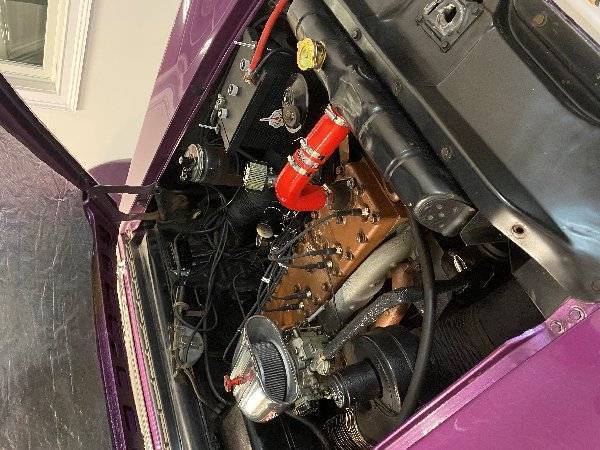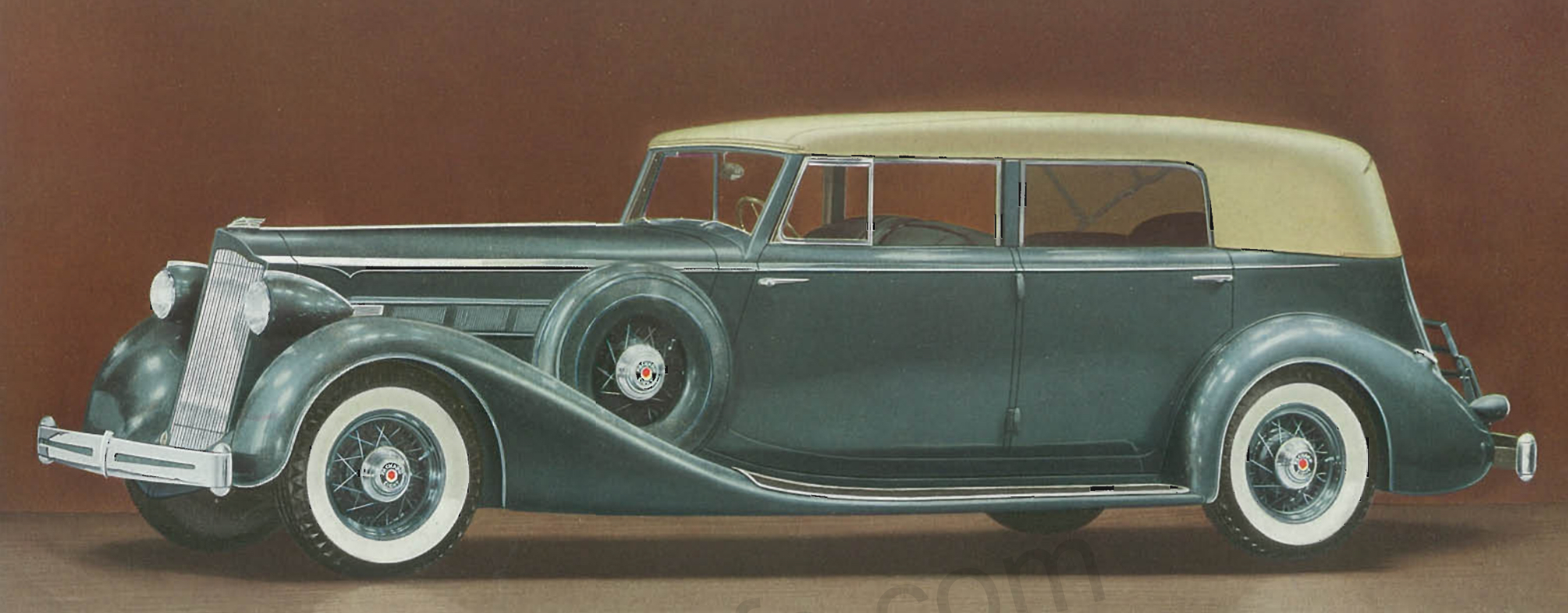|
Re: 1948 288 coil
|
||||
|---|---|---|---|---|
|
Home away from home
|
54packpac;
I agree with Howard. I've always viewed this grommet block as a tether keeping the wires from constantly hitting, not so much another wire, but a stationary steel guide. Other than the 'Nail Head' Buick, seems that wires were routed with a two goals in mind, that is, inhibit continuous rubbing on metal surfaces . . . especially exhaust manifolds, and inhibit 'bunching' of the wires. Given the success of the 'Nail Head', and many others that routed ignition leads in tubing, I suspect the 'bunching' goal was cosmetic I believe on a Packard there were also separators (known as Spark Plug Cable Spacers) on the plug side of the 'grommet block'. Two per car, different part numbers for the 48-52 cars, versus the 53-54 cars. The ones that were on my '54 had transformed themselves from a black semi-flexible item to black 'I'll pulverize if you touch me' substance. I replaced them with strips of 1/8 inch black rubber, ? by 2 ? inch, with ? inch holes ? inch on centers. I didn't split the rubber to accommodate the installation of the spacer after the fact. The cables were routed through the 'block' and 'spacer' during in situ fabrication of the wire set. Being obsessed with minutia I also let the distributor cap dictate which hole in the block the lead passes, and then let the crossing occur beyond the block. That produces zero crossing between the short run between the distributor and the block, which looks quite sanitary. Plate 84 & 87s suggests my OCD was not embraced by the Packard engineering staff. dp
Posted on: 2020/6/15 17:27
|
|||
|
||||
|
Re: 1948 288 coil
|
||||
|---|---|---|---|---|
|
Forum Ambassador
|
Just noticed the shift quadrant appears to be for a modern GM?? trans. Which unit is in the car and any idea who made the quadrant? I think I see the original behind the new letters but new still looks to be a very decent professional looking job compared to some I have seen.
Posted on: 2020/6/15 17:35
|
|||
|
Howard
|
||||
|
||||
|
Re: 1948 288 coil
|
||||
|---|---|---|---|---|
|
Home away from home

|
My dad used to use paper match book striker strips. Had some heft to it with the paper backing. He drove nothing but Packards for 30 years.
When he passed away he still had 22 Packards in the "stable".
Posted on: 2020/6/20 13:37
|
|||
|
Where principles are involved, be deaf to expediency. (Matthew Fontaine Maury 18th century oceanographer)
|
||||
|
||||
|
1954 packard pacific / GM 700-R4 transmission lens / radiator cap / pin hole leak
|
||||
|---|---|---|---|---|
|
Home away from home
|
Hi Howard,
You are correct. The shift lens is for a GM trans. The 54 has a GM 700-R4 trans. The lens is from ididitinc.com I tried to match the shift pattern as best I could and just stuck the lens in front of the actual Ultramatic lens. With the old lens and new trans, shifting was quite hairy if you didn't know the car. The lens might actually fit in the original Ultramatic space with some work. I haven't tried yet though. I have another lens that shows 3 speeds and an overdrive with a housing. Quick question, the car drives great and the temp is stable. The rad cap is a 7psi NAPA 703-1411. Unfortunately after driving this weekend the upper flange below the cap developed a pin hole leak in the neck seam. The car has a GANO filter so it cannot not take any internal radiator sealant. Do you know of any type of radiator sealant that can be applied externally to the neck seam?
Posted on: 2020/6/22 21:29
|
|||
|
||||
|
Re: 1954 packard pacific / GM 700-R4 transmission lens / radiator cap / pin hole leak
|
||||
|---|---|---|---|---|
|
Forum Ambassador
|
I have never tried it for that purpose but JB Weldjbweld.com/products has a decent reputation for other repairs and a couple of their products might work providing you can get the surfaces completely clean of paint and grease for a good bond.
The regular epoxy is liquid and might flow enough to get down in a crack or hole from the outside to bond with both surfaces. There is also another of their products called Waterweld which is in putty form and designed for use in wet environments. It might also work but being putty you would need to work and force the material down into the crack thoroughly. If the area is accessible from the filler opening than possibly a bit could be added from both sides although I don't know how well it would stick inside the radiator if there is oil present. The regular epoxy has a higher temp rating but either should be able to handle a radiator temp. No idea how long or if they would hold so it may still come down to removing the radiator and taking it to a shop.
Posted on: 2020/6/22 22:08
|
|||
|
Howard
|
||||
|
||||
|
Re: 1954 packard pacific / GM 700-R4 transmission lens / radiator cap / pin hole leak
|
||||
|---|---|---|---|---|
|
Home away from home
|
Thanks Howard. I did take it to the shop this morning. They sorted out. New neck and overflow tube. The overflow tube was not copper and clogged. Its 80 degrees here and the temp stayed right where it was supposed to when I drove home. Quite remarkable. Another question: I noticed when I replaced the GANO filter and rubber hoses with silicon hoses last week the GANO filter was full and clogged with a rubbery sludge. The coolant is Zerex original green 50/50 ethyl glycol. I have Evans but have not used yet. What was this sludge if the coolant was always nice and green? Also, what is the protocol amongst Packard peeps of adding a coolant additive like Royal Purple Purple ice to the coolant? I've added a small bottle of mishimoto liquid chill coolant additive in the past. Will additives cause sludge in general and clog the GANO filter?
Posted on: 2020/6/23 12:31
|
|||
|
||||

 (320.79 KB)
(320.79 KB)








